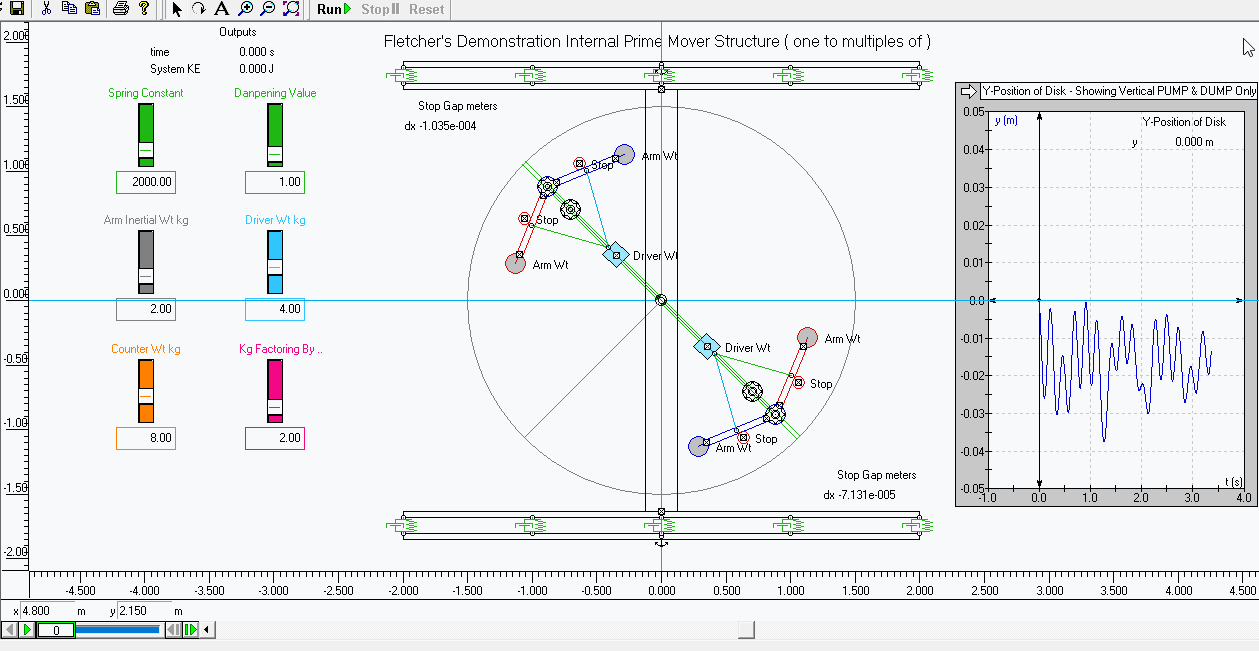Nice vision of movements and actions!Fletcher wrote: ↑Wed Feb 19, 2025 3:26 am A CW One-Way wheel - what the Prime Mover does in practical terms - some imagination required ..
The wheel is stationary and tied down - the Prime Mover is orientated to 9 o'cl with the Counter-Weight facing 3 o'cl - the Prime Mover and its Counter-Weight are completely balanced and provide no torque to the wheel ..
The wheel has an overbalance because the swingers are preset to give an CW torque, so upon release the wheel will revolve and accelerate CW carrying the balanced Prime Mover with it ..
When the Prime Mover rotates to around 10.30 o'cl it is freed to move ( natural timing, or latch or release ) - providing the Driver can lose GPE it will morph shape as the A closes and later opens again on the other side of the wheel - the speed that this morphing process happens ( time it takes ) is controlled by the inertia and length of arms of the A so that it will open again once past tdc, in fact past 1.30 o'cl, requiring slightly less PE restoration than from where it started from in an ideal situation ..
At 10.30 o'cl as it begins to morph its shape under gravity influence the Prime Mover Structure is no longer balanced - it is now bottom heavy ( has a COM below the axle ) which will accelerate the wheel towards tdc/bdc ( 12 and 6 o'cl ) like any pendulum action - at the same time as the A begins morphing the Moment Of Inertia ( MOI ) of the Prime Mover is temporarily decreased and then increased again later at reset position on the other side of the wheel - this " ice-skater effect " causes an increase and then decrease in the wheels Angular Velocity - both these parallel actions contribute to the x and y axis pumping and dumping of the swingers to raise them upwards into continued repeating overbalance / torque positions ..
Simultaneously to the above actions, the act of the Driver sequentially " falling " and " recovering " its height and balance during a half cycle morphing exercise causes the floor and ceiling it is attached to to flex downwards and upwards ( inertia's and tension ) repeatedly - also adding to the setting of the swingers into renewing overbalance / torque positions by rectifying " wheel " motion and movement into raising up the one-way swingers ..
The swingers are the mechanical method of maintaining the runners gravity overbalance and torque so it will accelerate and gain in momentum once released .. the Prime Mover(s) temporarily unbalance while they are morphing and cause the swingers to continually reset themselves before coasting with the wheel in balanced position until required to go again approaching tdc as before - together the Prime Mover(s) and one-way swingers form a feedback pathway that accelerates the wheel forward until rpm stabilizes at a speed/rpm determined mainly by wheel internal geometry relationships ..
Right, I see why you designed the counterweight that way, it can further contribute to OOB when the A-structures are swinging on the ascending side. Another idea is... We can possibly detach the gravitational/driver weight from the wheel environment, and this way it's possible to activate the A-primes any time we want. However, that might be complicated to do, needs some crazy cables and pulleys thing or ramelli/roberval gearing, or whatever...
So yes, this is a good vision for proper testing.



